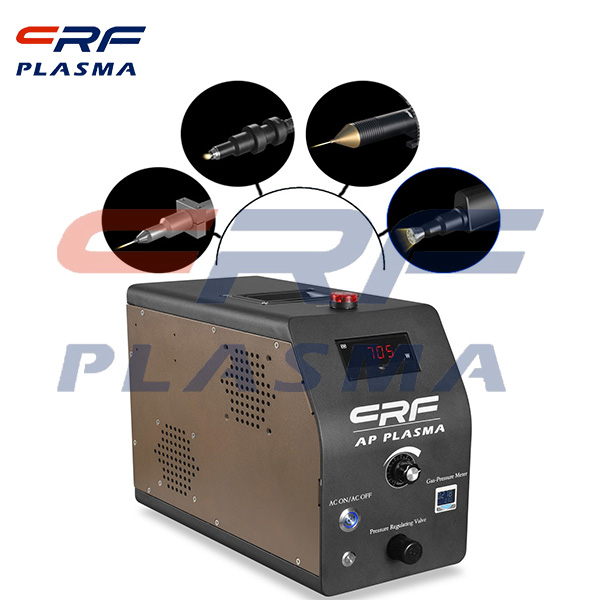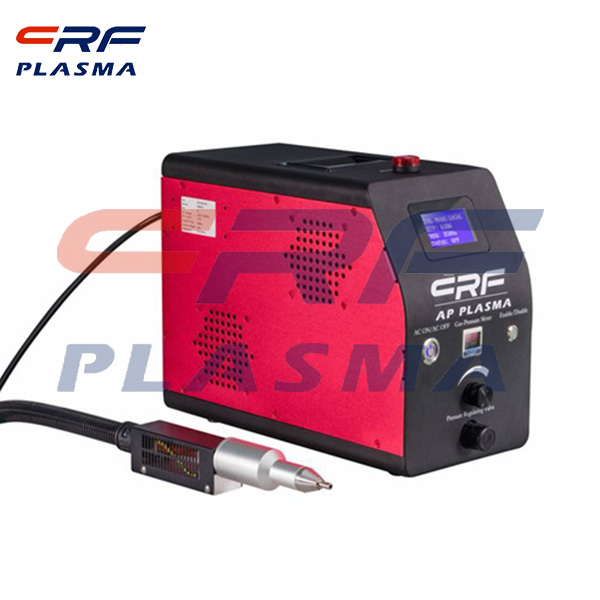
Welcome to Shenzhen Sing Fung Intelligent Manufacturing Co., Ltd.
E-mail:shaobo@sfi-crf.com
Etching of plasma surface cleaning machine side wall
- Categories:Company Dynamics
- Author:plasma cleaning machine-surface treatment equipment-CRF plasma machine-Sing Fung Intelligent Manufacturing
- Origin:
- Time of issue:2020-12-10
- Views:
(Summary description)Generally, tetrafluoride (CF4) is used as the Main Etch step for the etching of the side wall of the plasma surface cleaning machine. The main etching step etches off the primary oxide layer on the surface of the Si3N4 film and the si3N4 film of most thickness. By adjusting the pressure and power of the etching chamber, the anisotropic etching of the main etching step can be controlled to form the side wall. However, there is no selective ratio between silicon nitride and silicon oxide at the bottom in the main etching step. If not controlled, it will cause damage to the body silicon substrate at the bottom. Therefore, the endpoint monitoring of the main etching step on the side wall of the plasma surface cleaning machine will immediately stop the etching and switch to the etching step. The silicon nitride film remaining in the main etching step was etched by the over-etching step, and stopped on the silicon oxide film at the same time, so as to prevent damage to the underlying silicon substrate. CH3F or CH2F2 and O2 gas are usually used in the over-etching process. CH3F gas into CHx in plasma and f. + h. bombarding ions can interrupt Si - O keys, then provided to CFx groups react with Si can be volatile by-products formation, but in the surface of the plasma cleaning machine CH3F F ion in plasma concentration is low, CHx easily and - О - Si - reaction, formation - Si - O - CHx. The polymer is thinner on silicon nitride because the Si-N bond has a much lower bond energy than the Si-O bond, so the Si-N bond is easily broken. As it is an exothermic reaction, CHx can easily bond with -Si-N to produce ·CN+·H. Therefore, the etching reaction of plasma surface cleaning machine is very active on silicon nitride. On the contrary, a thick polymer is formed on the silicon oxide film layer, which prevents the further reaction. In general, a selection ratio higher than 10 can be obtained through process optimization. Table 3.8 lists the etching rate, selection ratio and uniformity of the dielectric layer and silicon under different carbon-fluorine ratio conditions. The width and height of the side wall are mainly determined by the thickness of the deposited film and the degree of etching on the plasma surface cleaning machine.
Etching of plasma surface cleaning machine side wall
(Summary description)Generally, tetrafluoride (CF4) is used as the Main Etch step for the etching of the side wall of the plasma surface cleaning machine. The main etching step etches off the primary oxide layer on the surface of the Si3N4 film and the si3N4 film of most thickness. By adjusting the pressure and power of the etching chamber, the anisotropic etching of the main etching step can be controlled to form the side wall. However, there is no selective ratio between silicon nitride and silicon oxide at the bottom in the main etching step. If not controlled, it will cause damage to the body silicon substrate at the bottom. Therefore, the endpoint monitoring of the main etching step on the side wall of the plasma surface cleaning machine will immediately stop the etching and switch to the etching step.
The silicon nitride film remaining in the main etching step was etched by the over-etching step, and stopped on the silicon oxide film at the same time, so as to prevent damage to the underlying silicon substrate. CH3F or CH2F2 and O2 gas are usually used in the over-etching process. CH3F gas into CHx in plasma and f. + h. bombarding ions can interrupt Si - O keys, then provided to CFx groups react with Si can be volatile by-products formation, but in the surface of the plasma cleaning machine CH3F F ion in plasma concentration is low, CHx easily and - О - Si - reaction, formation - Si - O - CHx.
The polymer is thinner on silicon nitride because the Si-N bond has a much lower bond energy than the Si-O bond, so the Si-N bond is easily broken. As it is an exothermic reaction, CHx can easily bond with -Si-N to produce ·CN+·H. Therefore, the etching reaction of plasma surface cleaning machine is very active on silicon nitride. On the contrary, a thick polymer is formed on the silicon oxide film layer, which prevents the further reaction. In general, a selection ratio higher than 10 can be obtained through process optimization. Table 3.8 lists the etching rate, selection ratio and uniformity of the dielectric layer and silicon under different carbon-fluorine ratio conditions. The width and height of the side wall are mainly determined by the thickness of the deposited film and the degree of etching on the plasma surface cleaning machine.
- Categories:Company Dynamics
- Author:plasma cleaning machine-surface treatment equipment-CRF plasma machine-Sing Fung Intelligent Manufacturing
- Origin:
- Time of issue:2020-12-10 08:44
- Views:
Etching of plasma surface cleaning machine side wall:
Generally, tetrafluoride (CF4) is used as the Main Etch step for the etching of the side wall of the plasma surface cleaning machine. The main etching step etches off the primary oxide layer on the surface of the Si3N4 film and the si3N4 film of most thickness. By adjusting the pressure and power of the etching chamber, the anisotropic etching of the main etching step can be controlled to form the side wall. However, there is no selective ratio between silicon nitride and silicon oxide at the bottom in the main etching step. If not controlled, it will cause damage to the body silicon substrate at the bottom. Therefore, the endpoint monitoring of the main etching step on the side wall of the plasma surface cleaning machine will immediately stop the etching and switch to the etching step.
The silicon nitride film remaining in the main etching step was etched by the over-etching step, and stopped on the silicon oxide film at the same time, so as to prevent damage to the underlying silicon substrate. CH3F or CH2F2 and O2 gas are usually used in the over-etching process. CH3F gas into CHx in plasma and f. + h. bombarding ions can interrupt Si - O keys, then provided to CFx groups react with Si can be volatile by-products formation, but in the surface of the plasma cleaning machine CH3F F ion in plasma concentration is low, CHx easily and - О - Si - reaction, formation - Si - O - CHx.
The polymer is thinner on silicon nitride because the Si-N bond has a much lower bond energy than the Si-O bond, so the Si-N bond is easily broken. As it is an exothermic reaction, CHx can easily bond with -Si-N to produce ·CN+·H. Therefore, the etching reaction of plasma surface cleaning machine is very active on silicon nitride. On the contrary, a thick polymer is formed on the silicon oxide film layer, which prevents the further reaction. In general, a selection ratio higher than 10 can be obtained through process optimization. Table 3.8 lists the etching rate, selection ratio and uniformity of the dielectric layer and silicon under different carbon-fluorine ratio conditions. The width and height of the side wall are mainly determined by the thickness of the deposited film and the degree of etching on the plasma surface cleaning machine.

Scan the QR code to read on your phone

TEL:0755-3367 3020 / 0755-3367 3019

E-mail:sales-sfi@sfi-crf.com

ADD:Mabao Industrial Zone, Huangpu, Baoan District, Shenzhen


















